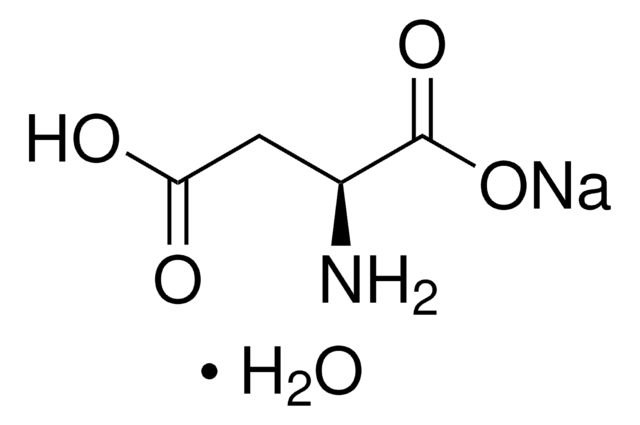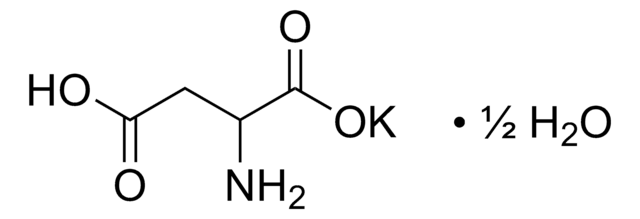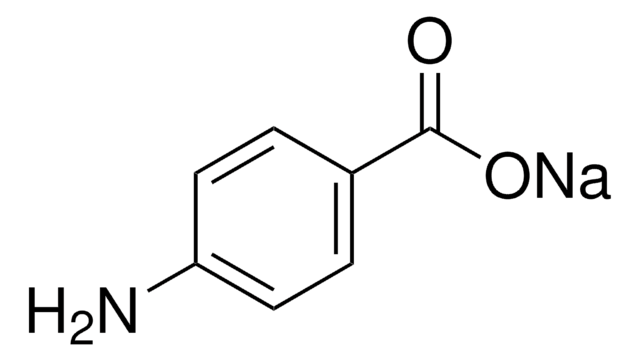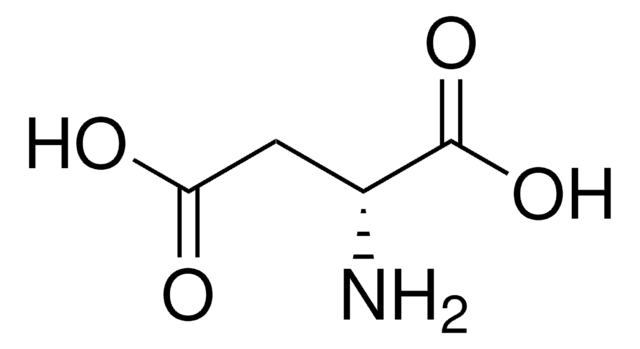W365601
Ácido L-aspártico
≥98%, FG
Sinônimo(s):
Ácido (S)-(+)-aminosuccínico, Ácido (S)-aminobutanodioico
About This Item
Produtos recomendados
fonte biológica
synthetic
Nível de qualidade
grau
FG
Agency
meets purity specifications of JECFA
conformidade reg.
EU Regulation 1334/2008 & 872/2012
FDA 21 CFR 172.320
Ensaio
≥98%
atividade óptica
[α]/D 24.0 to 26.0°, c = 8 in hydrochloric acid (6 N HCl)
pf
>300 °C (dec.) (lit.)
aplicação(ões)
flavors and fragrances
Documentação
see Safety & Documentation for available documents
alérgeno alimentar
no known allergens
Organoléptico
odorless
cadeia de caracteres SMILES
N[C@@H](CC(O)=O)C(O)=O
InChI
1S/C4H7NO4/c5-2(4(8)9)1-3(6)7/h2H,1,5H2,(H,6,7)(H,8,9)/t2-/m0/s1
chave InChI
CKLJMWTZIZZHCS-REOHCLBHSA-N
Procurando produtos similares? Visita Guia de comparação de produtos
Ações bioquímicas/fisiológicas
Código de classe de armazenamento
11 - Combustible Solids
Classe de risco de água (WGK)
WGK 1
Ponto de fulgor (°F)
Not applicable
Ponto de fulgor (°C)
Not applicable
Equipamento de proteção individual
dust mask type N95 (US), Eyeshields, Gloves
Escolha uma das versões mais recentes:
Já possui este produto?
Encontre a documentação dos produtos que você adquiriu recentemente na biblioteca de documentos.
Os clientes também visualizaram
Nossa equipe de cientistas tem experiência em todas as áreas de pesquisa, incluindo Life Sciences, ciência de materiais, síntese química, cromatografia, química analítica e muitas outras.
Entre em contato com a assistência técnica









